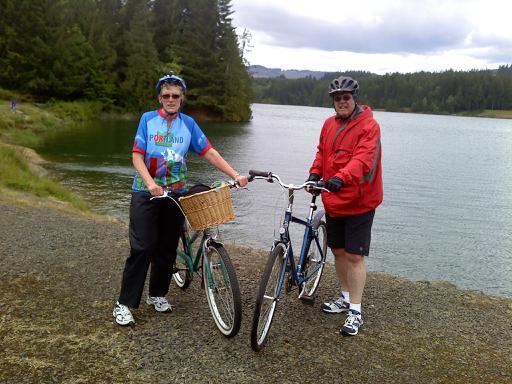Landing sites covered a distance of 61 miles along the Normandy coast, which was heavily fortified by the Germans. Just above each beach were defensive enclosures every 2 miles or so called Widerstanz Nests (resistance nests). Each was surrounded by 7 foot deep and 6 foot high barbed wire, a concrete wall, and a trench. each contained several bunkers with large guns that could rotate 360 degrees and fire up to 12 miles distance out to sea or land, machine gunner bunkers, ammo depots, housing for the troops, surveillance bunkers and radio communications to other Widerstanz nests. Each section in the nest was connected to another via a zigzagging trench. The land behind the cliffs was flat and had been flooded by the Germans to a depth of 2-3 feet. As the land rose in height, large guns with a 12 mile range were located. The level of planning, skill and courage involved in overtaking this amount of defense is difficult to imagine.
First came the paratroopers, just after midnight, charged with taking out the large guns inland and securing the four roads that were above the flooded fields that led to the landing sites. A famous incident regarding the paratroopers occurred in St.Mere Eglise, where paratroopers sustained heavy casualties landing in the village instead of the fields behind. Two landed on the roof of the church, one suspended near the steeple by his parachute. The church has commemorated the courage of the paratroopers by stained glass in the church and plaques throughout town. 

The landing at Utah beach was the most successful of the American landing sites, due to chance (divine providence) that led them to land further down the beach than planned, leading to only 13 casualties in the landing itself.
The landing at Omaha Beach was not so successful. In preparation for both landings, the US heavily bombed German fortifications along Pont du Hoc and sent a team of Army Rangers to find and destroy German Widerstanz nests ahead of time. The rangers sustained heavy casualties but managed to take out a nest of five long range guns that could have made things much more deadly at Utah Beach and Omaha beach. One can still see craters from the allied bombs and remains of bunkers. 

There are various military equipment pieces left around for inspection.
Also are many memorials to the courage of the soldiers who fought through virtually insurmountable odds to take these sites.
While Utah Beach enjoyed coincidental favorable mistakes, Omaha Beach suffered the consequences of many unfavorable events. The beach was not flat at the landing site, but furrowed side to side, so the landing boats got caught underneath and had to drop off men in very deep water where many drowned. Bombardment to knock outGerman defenses failed, due to heavy fog and inexperienced pilots, with bombs landing either in the ocean or behind the defensive lines. The landing primarily was directly in front of heavy fortifications. The great majority of landing forces in the first wave died. Waves of landing troops kept coming every few minutes, and the rangers eventually succeeded in taking out some of the defenses, but the troops still had to climb large cliffs to reach the defenses, and much of their equipment was lost at sea as the boats sank or the equipment failed.
While we have certainly learned about the horror of this fighting and the great sacrifice involved on the part of the troops, seeing things firsthand was quite an experience.


















No comments:
Post a Comment